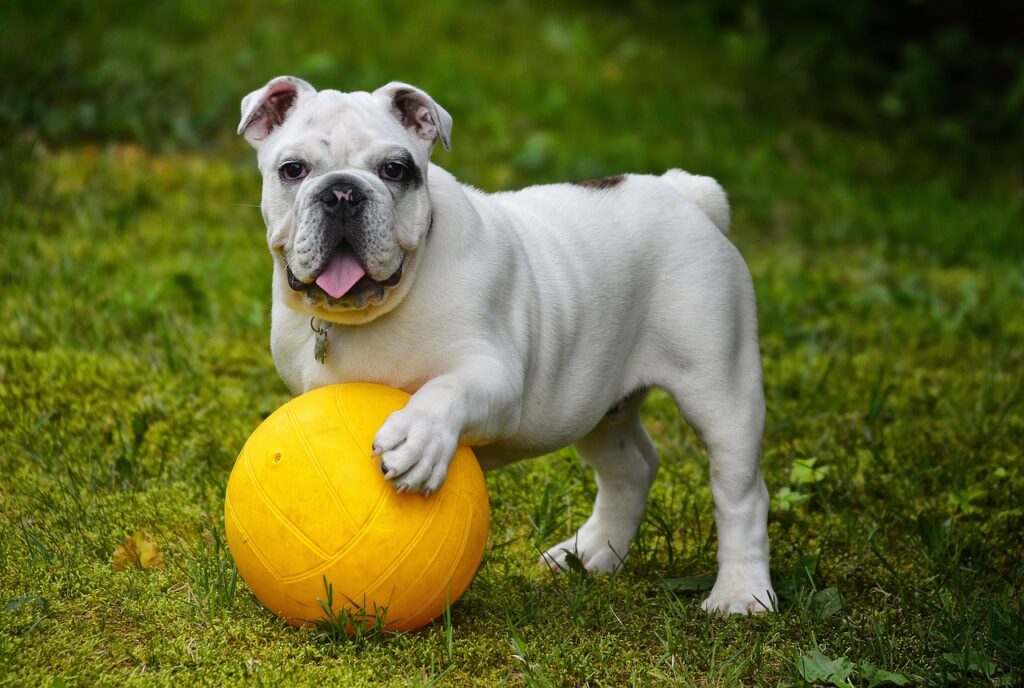Puppies stop growing at varying rates based on breed, age, and size.
Let’s examine the specifics:-
1.Little Breeds: (0–20 lbs) :-
- By the time they are 6 to 8 months old, these tiny pups usually puppies stop growing.
- They have already nearly reached adult size at this age.
2. Medium-Sized Breeds: 21–50 lbs :-
- Puppies of medium size grow a little bit more slowly.
- At the age of 12 months, they typically reach adult size.
3. Large Breeds (51-100 lbs) :-
- It takes longer for larger dogs to mature.
- They keep growing until they are between 12 and 18 months old.
- It takes them longer to reach their final size because of their larger bones.
4. X-Large Breeds (100 lbs. and Up) :-
- The largest breeds require the longest maturation periods.
- They keep growing until they are between 18 and 24 months old.
5.Growth Plates and Bones Development :-
- A puppy’s legs develop long bones from growth plates.
- During the puppy stage, these growth plates are relatively flexible and soft, which allows new tissue to form.
- As your puppy grows, this new tissue solidifies into bone.
- The growth plates are deemed closed and the bone reaches its maximum size when it stops forming new tissue and is fully calcified.
Recall that, as with adult humans, your puppy will continue to gain fat and muscle even after their bones have fully grown. Enjoy, then, as your pet develops into their greatest self.
When Do Smaller Puppies Finish Growing?
Puppy breeds that are small to medium-sized mature fairly quickly. Small puppies reach adulthood at about half the age of the bigger ones. Small breeds puppies usually stop growing by the time they are six or eight months old. Puppies of medium breeds may take a little longer to mature, reaching adult size at about 12 months of age. Therefore, if you have a furry child, treasure the puppy years because they will grow up quickly.
When Do Larger Puppies Finish Growing?
Due to larger bones requiring more time to grow, larger dogs take slightly longer than smaller ones to reach adult size. Puppies of the giant breed mature to be between 12 and 18 months old. As adults, large to giant breed pups typically weigh 70 pounds or more. Thus, if you have a large furry friend, please be patient; they will arrive.


What are some common growth-related health issues in puppies?
Puppies may encounter the following common health issues related to stop growing:-
1. Osteoarthritis:-
- Description:- Panosteitis is a painful developmental disorder that affects young, large-breed puppies that grow quickly.
- Symptoms:- Muscle pain that waxes and decreases is comparable to growing pains in humans.
- Waxing and waning musculoskeletal pain, similar to growing pains in humans.
- Sudden-onset lameness in one or more limbs.
- Lameness that shifts between limbs.
- Severe pain when affected limbs are palpated.
- willingness to rise.
- Loss of appetite.
- Excessive vocalization.
- Fever.
o Affected Breeds:-
The most common breed is the German Shepherd Dogs.
Other breeds that are prone to this problem are Rottweilers, Basset Hounds, Golden Retrievers, Great Danes, Labrador Retrievers, and Doberman Pinschers.
o Treatment:-
Use non-steroidal anti-inflammatory drugs (NSAIDs) to relieve pain during flare-ups; there is no known cure for panosteitis.
During episodes, rest and avoiding strenuous activity are recommended.
Making the switch to a healthy diet in order to stop more issues.
2. Hip Dysplasia:–
o Synopsis:- A genetic condition affecting the hip joint is known as hip dysplasia. Risk factors include rapid growth and excessive weight about age. Excessive physical activity.
o Symptoms:- Posture abnormalities, Painful joints, Decrease in muscle mass.
o Preventive:- measures include controlled growth and upholding a healthy weight.
3. Disorders of Developmental Growth:-
Description:- These conditions include hip dysplasia, severe obesity, painful joints, bowed legs, abnormal posture, and muscle wasting.
Breeds That Are at Risk :- Puppies of large or giant breeds (those that grow to weigh more than 55 pounds).
Prevention:- Keep an eye on the growth rate. Give proper nourishment and prevent overindulgence in weight gain.
4. Weaker Immune Systems:-
Description:- Compared to adult dogs, puppies’ immune systems are weaker, Risk factors: exploration and curiosity.
Common Health Conditions:- Due to their weakened immune systems, puppies are more prone to a variety of health conditions.
Preventive actions include routine veterinarian examinations.
Appropriate diet.
Vaccinations.
Control of parasites.
A secure environment.
What are some signs of a healthy growing puppy?
These indicate a healthy, developing puppy:-
1. Hunger and Increased Weight:-
A healthy puppy puts on weight steadily and has a good appetite.
Appropriate portions and regular meals support their growth.
2. Clear Ears and Bright Eyes:-
Their eyes ought to be clear, bright, and discharge-free.
Ears ought to be clear and free of any infections.
3. Shiny Coat:-
A coat that is shiny and soft denotes general health.
Proper grooming contributes to coat quality maintenance.
4. Playful and Energetic:-
Puppies are naturally lively and gregarious.
Playtime and age-appropriate activities should be enjoyed by them.
5. Regular Bowel Movements:-
Normal stools are not unduly loose; rather, they are well-formed.
Regular bowel movements are a good indicator.
6. Gums and Teeth in Good Condition:-
Pink gums and white teeth signify good gum health.
Getting regular dental care is crucial.
7. Appropriate Growth Rate:-
Puppies should have a steady growth pattern free from abrupt growth spurts or stunting.
Speak with your veterinarian to keep an eye on growth.
8. Social Interaction:-
A happy, healthy puppy is gregarious and inquisitive.
They take pleasure in relating to both humans and other animals.
9. Vaccinations and Preventive Care:-
Scheduling routine veterinary examinations is essential for both vaccinations and preventive care.
10. Alertness and Curiosity:-
A puppy’s attentiveness and curiosity demonstrate their interest in the environment.
Recall that every puppy is different, so it’s important to pay attention to their particular behavior and seek advice from your veterinarian!


How to exercise a growing puppy safely ?
How to Safely Exercise Your Growing Puppy:-
1. Physical Activity:-
The amount of exercise your puppy needs each day will vary depending on their breed and age.
Refrain from going overboard, particularly since the bones in your puppy are still growing.
Restrict high-impact exercises such as skidding, twisting, and jumping.
Give your puppy short bursts of exercise and let him or her rest when needed.
2. Mental Stimulation:-
The cognitive abilities of your puppy are still maturing.
Perform mental exercises to improve your ability to remember things and solve problems.
Take into account difficult games such as using stacking containers with kibble inside or hiding treats in a plastic bottle.
Playing indoor games like hide-and-seek will help your puppy develop cognitively.
Having fun while learning valuable lessons is important. For example, playing tug-of-war can help you develop emotional self-control and skills like “Drop It”
3. Safety Procedures:-
Prior to exercising in public areas, make sure your puppy has received all of its vaccinations.
Select appropriate and safe games and physical activities for your group.
Keep in mind that while a tired puppy makes a good puppy, mental exercise is just as vital.

